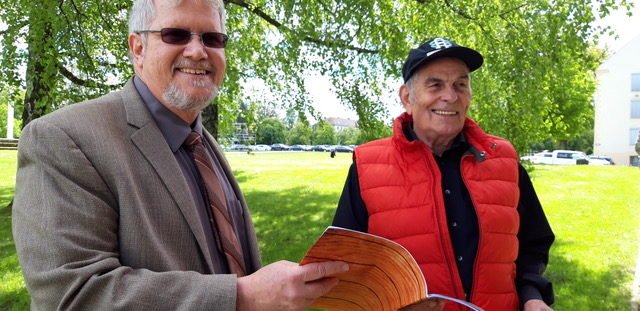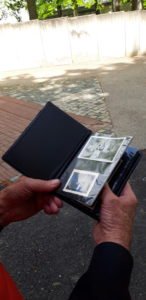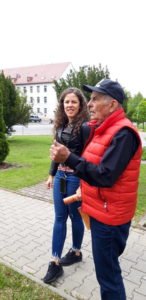
By Angelika Aguilar
USAG Stuttgart Public Affairs
At 80 years of age, Dieter Baetsch said it was his greatest desire to return to the place he lived as a child for the first five years of his life, 1939-1944. During the war, his father served as Kurmaerker Kaserne’s administrative commander.
Accompanied by his granddaughter, Sophie Zimmermann, and Daniel Fitzgerald, historian, US European Command, he recently returned to his former home, now known as USAG Stuttgart’s Patch Barracks.

Together with the historian, the trio walked around the kaserne, checking his black and white pictures, until he was finally were able to locate his former home: Bldg. 2915, EC-J2. The pictures showed the outside of their apartment on the second floor, and he pointed out where his former “Kinderzimmer” was located.
Baetsch told a moving story about how they were bombed by the U.S. Army-Air Force during the war, pointing out what was then his dining room window where a bomb went through and got stuck in the crystal chandelier. Fortunately, it didn’t explode and nobody got hurt. He was able to locate the same tree in the garden he used to climb on when he was little.

His father had never been a member of the Nazi party, and therefore, when called by the Americans during the denazification process, he was released shortly afterward.
The octogenarian now lives in the Heilbronn area. He enjoyed his visit and was very happy to be treated as a friend. Baetsch hopes to be able to come back one more time.
The name Kurmaerker Kaserne is why the alternate gate is now referred to as the K&K gate.
